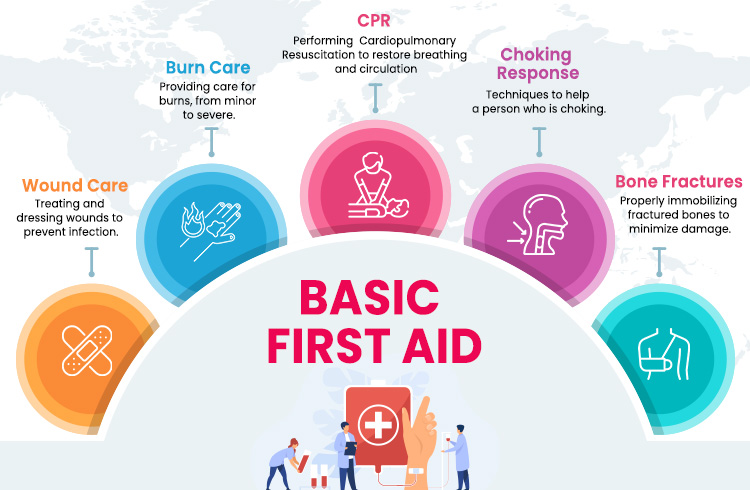Uncovering the mystery of srcset: How this HTML attribute can revolutionize the way we display images on the web.

Image courtesy of via DALL-E 3
Table of Contents
Have you ever wondered how images look so clear and load quickly on websites? Well, one of the reasons behind this magic is a little thing called “srcset.” When you browse the internet, srcset plays a crucial role in making sure the pictures on websites appear just right, no matter what device you’re using. Let’s dive into the world of srcset and find out why it’s so important for displaying images on the web!
Understanding Images on the Web
Images play a crucial role in making websites appealing and informative. They are like the colors in a painting, adding life and interest to webpages. Whenever you browse the internet and see photos, illustrations, or graphics, you are looking at images.
Why Images Matter
Imagine visiting a website with no pictures at all – it would look dull and boring, right? Pictures help to break up text and make webpages more engaging. They also help convey information quickly and effectively. For example, a photo of a cartoon character can instantly tell you that a website is about kids’ cartoons.
How Images Are Uploaded
Uploading images to websites is like adding photos to a digital photo album. When a website creator wants to include an image, they choose the picture from their computer and upload it to the specific place on the webpage. Once uploaded, the image appears for everyone to see when they visit the site.
What is Srcset?
When you browse the internet, you see all kinds of pictures on websites, right? These images are important because they make the webpages look interesting and help us understand what the website is all about. But have you ever wondered how these pictures come to be on the web? That’s where the concept of ‘srcset’ comes into play!
Srcset Defined
Srcset is like a special tool that web developers use to help display images on websites. It is an attribute in HTML, which is like a set of instructions that tells the browser how to show images correctly based on the screen size and resolution. In simple terms, srcset helps in choosing the right image for the device you are using, whether it’s a computer, tablet, or phone.
How Srcset Is Used
Let’s say you are visiting a website on your phone. The screen size of your phone is smaller than a computer screen, right? Srcset comes in and helps the website show you a smaller image that fits perfectly on your phone without taking up too much space. This way, the webpage loads faster, and you get to see a clear picture without the need for zooming in or out.
Why Use Srcset?
When you browse the internet, have you ever noticed that some websites load quickly while others take forever? One reason behind this speed difference is how images are handled on a webpage. This is where the srcset attribute comes into play and can make a big difference in how fast a webpage loads and how good the images look.

Image courtesy of webdesign.tutsplus.com via Google Images
Improving Speed
One of the key benefits of using srcset is that it helps webpages load faster. How does it do that? Well, srcset allows web developers to provide multiple versions of an image at different resolutions. When a webpage is accessed, the browser can choose the most appropriate image size based on the device’s screen resolution. This means that users get to see a high-quality image that isn’t unnecessarily large, leading to quicker loading times.
Better Quality
Srcset doesn’t just improve speed; it also helps in displaying images that are clear and crisp. By serving the right image size for each device, srcset ensures that images look sharp and detailed, enhancing the overall user experience. So, not only do webpages load faster with srcset, but the images themselves look better too!
How to Use Srcset in HTML
Using srcset in HTML is a great way to optimize your website’s images for different screen sizes, improving the overall user experience. Let’s dive into how you can effectively use srcset in your HTML code.
Basic Example
When adding an image to your HTML code, you can use the srcset attribute to provide multiple image sources at different resolutions. Here is a simple example:
“`html

“`
In this example, “image.jpg” is the default image source, while “image-1x.jpg” and “image-2x.jpg” are alternative sources for different screen pixel densities.
Advanced Example
For a more detailed example, consider the following code snippet:
“`html

“`
In this advanced example, “small.jpg,” “medium.jpg,” and “large.jpg” are offered as image sources with different widths specified in the srcset attribute. The sizes attribute ensures that the correct image is displayed based on the screen width.
By incorporating srcset in your HTML code, you can ensure that your website’s images look crisp and clear on all devices, leading to a more engaging user experience.
Srcset Alternatives
The ‘picture’ element in HTML is another way to handle responsive images on the web. It allows web developers to define different image sources based on various conditions, such as screen size or resolution. By using the ‘picture’ element, you can provide the browser with multiple image options to choose from, ensuring the best quality image is displayed to the user.

Image courtesy of webdesign.tutsplus.com via Google Images
Media Queries
Media queries are a powerful tool in web development that can be used to adjust the styling and layout of a webpage based on various factors, including screen size, device orientation, and resolution. By utilizing media queries, you can create responsive images that adapt to different screen sizes and devices, providing a seamless user experience. This approach can be a viable alternative to using the srcset attribute in certain situations, especially when dealing with complex layout changes based on different device characteristics.
Common Mistakes and How to Avoid Them
When working with images on the web, there are a few common mistakes that you should be aware of in order to ensure your website runs smoothly and efficiently. Let’s take a look at these mistakes and how to avoid them:
Incorrect Syntax
One of the most common mistakes when using srcset is incorrect syntax. This can lead to images not loading properly on your website. To avoid this mistake, make sure you double-check your code and ensure that the srcset attribute is written correctly with the appropriate image sizes and resolutions.
Overloading Images
Another mistake to avoid is overloading your website with too many large image files. This can slow down your site’s loading speed and affect the user experience. To manage this, make sure to optimize your images by resizing them to the correct dimensions before uploading them to your website. Additionally, consider using image compression techniques to reduce file sizes without sacrificing image quality.
Best Practices for Using Srcset
When working with images on the web, it’s important to follow some best practices to ensure they are displayed correctly and efficiently. Here are some tips for effectively using srcset in your web projects:

Image courtesy of www.paryavaran.com via Google Images
Choosing the Right Image Sizes
One of the key aspects of using srcset is selecting the appropriate image sizes to include. By providing multiple image options with different resolutions, srcset can help load the most suitable image based on the user’s device screen size.
Regular Testing
Testing is crucial when implementing srcset to ensure images are displayed correctly on various devices and screen sizes. Make it a habit to test how your images look on different screens, such as smartphones, tablets, and desktops, to guarantee a seamless user experience.
Conclusion
In this blog post, we explored the concept of srcset and its significance in displaying images on the web. We learned that srcset is an attribute used in HTML for images, allowing web developers to provide different image sources based on the user’s screen resolution. By using srcset, websites can load faster and display high-quality images, enhancing the user experience.
We discussed the importance of images on websites, how they make webpages visually appealing, and aid in communicating information effectively. Understanding the process of uploading images to websites and implementing them through srcset can significantly impact a website’s performance and engagement.
By delving into the benefits of using srcset, such as faster loading times and better image quality, we highlighted the advantages that this attribute offers to web developers. Additionally, we provided guidance on how to use srcset in HTML with basic and advanced examples to assist readers in implementing this attribute in their projects.
Moreover, we introduced alternatives to srcset, such as the picture element in HTML and media queries, for handling responsive images on the web. By addressing common mistakes and offering best practices for using srcset, we aimed to equip readers with the knowledge and tools necessary to optimize image display on their websites.
Overall, understanding and effectively utilizing srcset can have a positive impact on website performance and user experience. By following best practices, testing image display on various devices, and making informed choices when selecting image sizes, web developers can create visually appealing and efficient websites that engage users effectively.
Want to turn these SEO insights into real results? Seorocket is an all-in-one AI SEO solution that uses the power of AI to analyze your competition and craft high-ranking content.
Seorocket offers a suite of powerful tools, including a Keyword Researcher to find the most profitable keywords, an AI Writer to generate unique and Google-friendly content, and an Automatic Publisher to schedule and publish your content directly to your website. Plus, you’ll get real-time performance tracking so you can see exactly what’s working and make adjustments as needed.
Stop just reading about SEO – take action with Seorocket and skyrocket your search rankings today. Sign up for a free trial and see the difference Seorocket can make for your website!
FAQs
What is the purpose of srcset?
Srcset is an important attribute used in HTML for images on the web. Its main purpose is to help websites load faster and display images more efficiently. Srcset ensures that the right image size is loaded based on the device the website is being viewed on, improving performance and user experience.
How do I use srcset?
Using srcset in HTML is quite simple. When adding an image to your webpage, include the srcset attribute along with the different image sizes you want to provide. This allows the browser to choose the best image size based on the user’s device and screen resolution, ensuring optimal display quality.
Can I use srcset for all images?
While srcset is a powerful tool for optimizing image loading and display, it may not be necessary for every type of image on the web. It is most beneficial for responsive websites that cater to various screen sizes and resolutions. If your website doesn’t require different image sizes or if all images are the same resolution, using srcset may not be needed.







